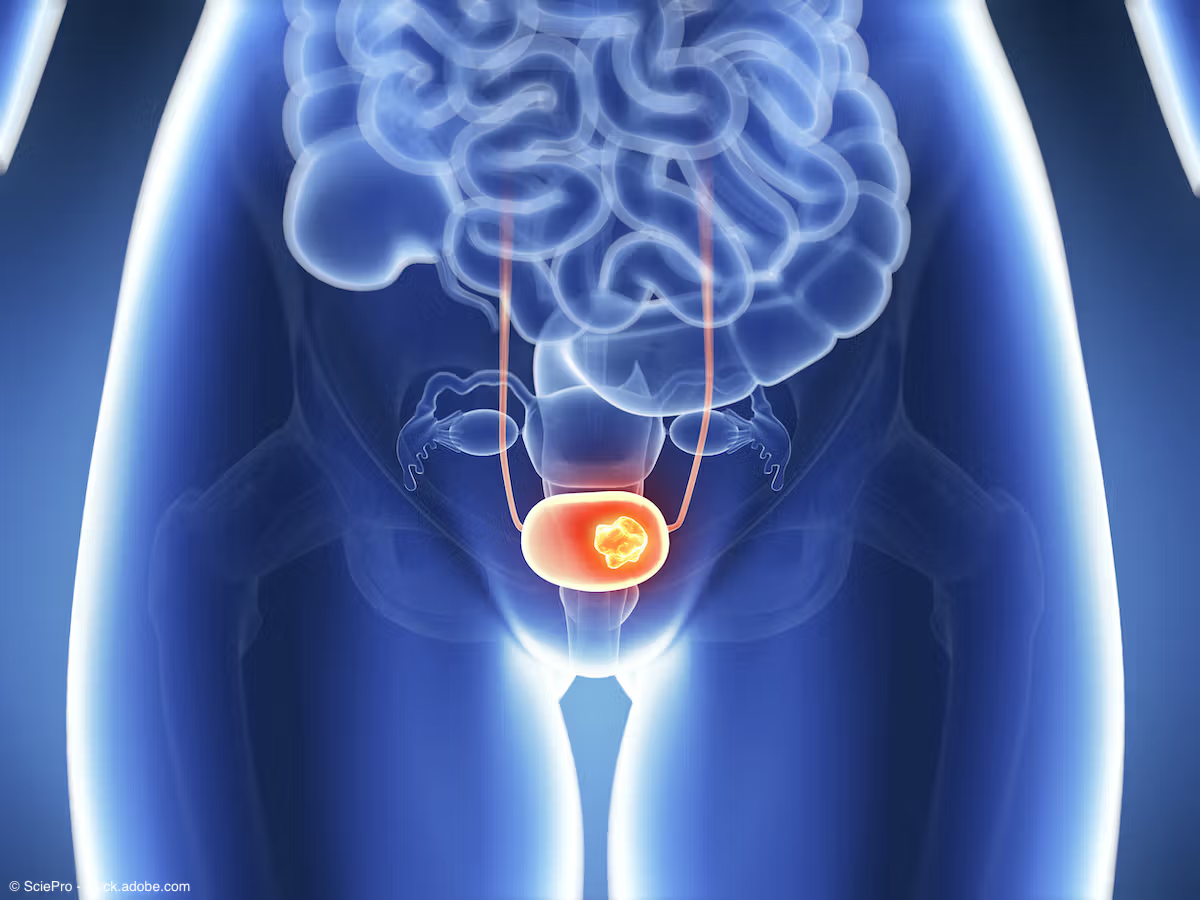Opinion
Video
Dr. Bjurlin discusses inpatient tobacco treatment program post cystectomy
Author(s):
"It really opened up an opportunity to provide support for our patients with bladder cancer who smoked in patient after that teachable moment of surgery," says Marc Bjurlin, DO, MSc, FACOS.
In this video, Marc Bjurlin, DO, MSc, FACOS, describes the background and notable findings from the AUA 2024 abstract “Efficacy of inpatient, evidence-based tobacco use treatment of patients with bladder cancer after radical cystectomy.”
Transcription:
Please describe the background for this study.
We know that cigarette smoking is the leading modifiable cause of bladder cancer and that smoking cessation has been associated with a number of improved outcomes in our bladder cancer population who smoke. We've also learned that the diagnosis of bladder cancer in our patients who smoke is really a teachable moment to harness the power of smoking cessation. And there are some supporting data that suggest not only is the time of diagnosis a teachable moment, but perhaps the time of surgery may be a teachable moment. So with that in mind, we developed a 1-year prospective longitudinal study of inpatient post radical cystectomy patients who smoke to be evaluated by our tobacco treatment program. And then we looked at several outcome measures over the subsequent course of their hospital stay, and then a 1-month follow-up to ultimately see if we can support our patients with bladder cancer.
What were some of the notable findings? Were any of them surprising to you and your coauthors?
So just briefly to discuss how our implementation worked first, and then I'll get into a little bit of the data. Essentially, from June of 2022, to June of 2023, all of our patients with bladder cancer who smoked and underwent a radical cystectomy were then consulted by our in-house tobacco treatment program on post-operative date 2 or 3, to assess their smoking situation and to provide some support. Our tobacco treatment programs specifically did a telephone consultation; they did a standardized assessment of their nicotine dependence using this Fagerstrom test. They counseled our patients on tobacco cessation treatment strategies, as well as resources available, and then they offered them nicotine replacement. We looked at several outcomes. One of the primary measures was, were we actually able to implement this tobacco treatment consultation, and we compared that to our historical controls. And then we also looked at both inpatient nicotine replacement therapy use as well as outpatient nicotine therapy fill rates on 1-month follow-up. Some secondary measures that we looked at included the number of quit attempts. In the first month after discharge, we looked at the reduction in cigarette use. And then we looked at the actual quit rate at that 4 weeks post discharge, as well as some provider satisfaction and some patient satisfaction surveys. So I think the results that we got from this 1-year longitudinal study were actually quite interesting and perhaps profound. Prior to the start of our intervention, about 20% of our patients who underwent radical cystectomy who smoked were referred to our inpatient tobacco treatment program. After our intervention, we were able to ramp that up to 100% of our patients. In that 1 year, we did 63 radical cystectomies, and then 16 of those patients smoked and were enrolled in this trial. When we looked at nicotine replacement therapy, 40% of our participants accepted nicotine replacement while in the hospital. And we know when they take nicotine replacement in the hospital, it curbs their withdrawal, it helps them essentially on a road to quitting. And as a number of positive impacts and downstream quit attempts. On the 4-week follow-up, about 64% of our patients fulfilled their nicotine replacement therapy, which suggests that they're on the road to try to curb their smoking use. In terms of some of the secondary measures we looked at, we were able to decrease the amount of cigarettes that our participants smoked, from on average about 14 cigarettes per day down to just about 6 and a half cigarettes a day. So we're almost cutting their smoking in half, which was statistically significant. And perhaps some of the profound data we have is that 86% of our patients attempted to quit smoking during that 4-week time period, which I think is quite remarkable. This really shows that these patients are taking what they've learned and their motivation during their hospital stay and then transitioning that to their normal life when they leave the hospital. And our actual smoking quit rate was 29%, which suggests almost 1 out of 3 of our patients with bladder cancer who smoked were able to quit in the first 4 weeks after discharge. So I think a lot of provocative data in this smaller single-institutional study, but it really opened up an opportunity to provide support for our patients with bladder cancer who smoked in patient after that teachable moment of surgery.
This transcription was edited for clarity.

















